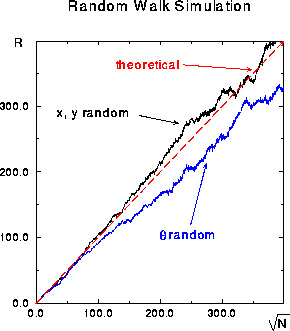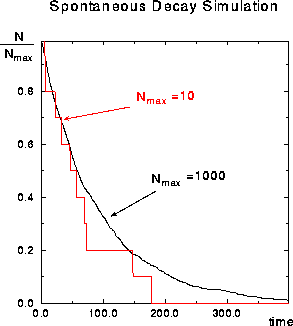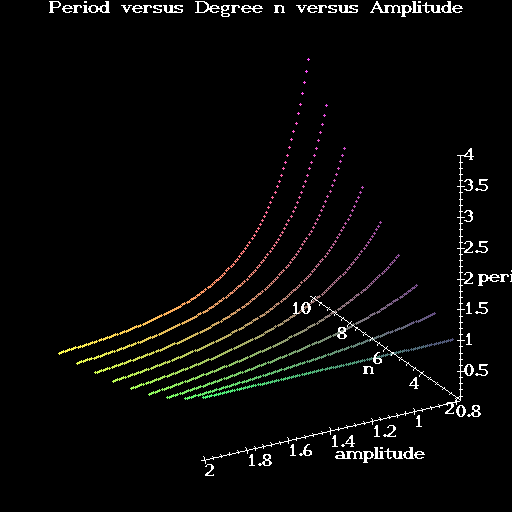Figure: Seven different randon walks. Each walk starts at the origin
and makes 1000 steps. (Courtesy of P. Lagner.)
 Figure: The distance R
covered in random walks of N steps as a function of the square root
of N. The solid curves correspond to two different
techniques for simulating the random walks. (Courtesy of
H. Kowallik.)
Figure: The distance R
covered in random walks of N steps as a function of the square root
of N. The solid curves correspond to two different
techniques for simulating the random walks. (Courtesy of
H. Kowallik.)
 Figure: The fraction of nuclei remaining as a function of time in a
simulation of radioactive decay. (Courtesy of H. Kowallik.)
Figure: The fraction of nuclei remaining as a function of time in a
simulation of radioactive decay. (Courtesy of H. Kowallik.)
 Figure: The period of an nth degree oscillator as a function of
degree n and amplitude of oscillation. (Courtesy of P. Lagner.)
Figure: The period of an nth degree oscillator as a function of
degree n and amplitude of oscillation. (Courtesy of P. Lagner.)